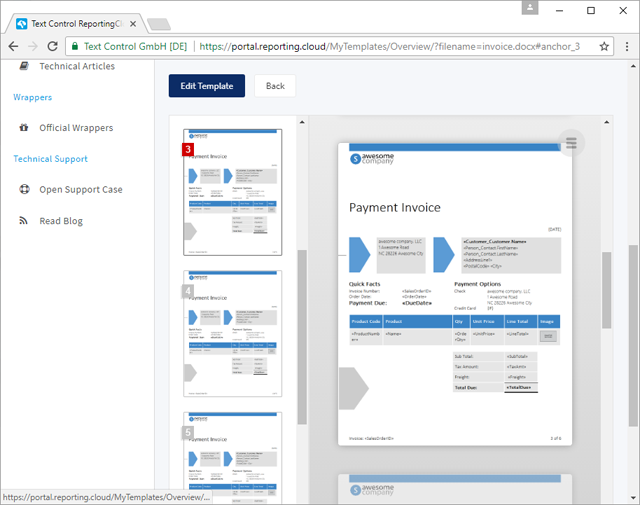Business-critical Documents Must Be Created and Stored on Premise!
This is a sentence that was and might be valid for information governance people around the globe. Companies must exercise control over its data processing and ensure that data is processed on valid legal grounds and in a secure environments. All of that is true, but the ship has already sailed on the cloud. The cloud is not the solution for everything, but it should be part of every process planning discussion.

Digital transformation changed every process in today's business world. The number of e-commerce transactions skyrocket and supply chains are fully connected. In nearly any business process, documents and reports need to be designed, created, shared and archived.
Companies Who Are Not Digitizing Their Operations and Documents Will Be Left Behind
As Text Control, we are very strong in the healthcare industry and this seems to be the fastest and most dynamic vertical when it comes to digitization of document processes. This is surprising as you would think that the data protection barriers are significantly higher in this industry. And that is very true.
But with the help of incentives (and penalties), the Health Information Technology for Economic and Clinical Health (HITECH) Act in the United States, paper records have been transformed to electronic patient records very quickly.

In the 70s, the "paperless office" have been promoted mainly with cost saving incentives, because documents were not supposed to be printed anymore. We all know that the "paperless office" didn't happen yet. In the near future, paper won't go away completely. But an effective digitization will be crucial for companies. We believe that the form of a document will continue to survive even with 100% digital transactions.
Consider a complete paperless office and a paperless order process. Company A is ordering a product from company B. The order is arriving digitally directly in company B's system (let's say as JSON as this format is hip right now). The seller is checking inventory automatically and when the products are available, they are shipped. An order notification, shipping "paper" and an "invoice" is generated in JSON form and will be sent to the procurement system of company A.
So far so good. The goods have been exchanged, digital invoices have been sent and the transaction is completed. This process works very well, if all business partners provide the same interface to their EDI (Electronic Data Interchange) systems and if all business partners have such a system. Additionally, this works very well with pre-negotiated terms and conditions. But as long as a human is involved in this process, a human-friendly paper format based document is required. The paper format is the perfect format to get a quick overview of a transaction. Compare an invoice to a dashboard report that summarizes mass data that could not be recognized easily by looking at the pure data.
Users Will Increasingly Demand Pixel-perfect Information on Any Device
Employees use a variety of devices to process and view documents in business processes. Mobile phones, tablets, laptops and desktop computers must be included in each and every process. Creating documents and forms for each of these devices from one source is the goal in these cases.
The PDF format is the de facto standard and successor of the printed document. It has the same paper based format, cannot (easily) be modified, can be encrypted, protected and controlled (user access options) and it is available in several ISO standards such as PDF/A for archiving purposes.
Today's Business Applications Need to Include Paper-based Processes, PDFs and Digital Documents
Text Control provides the tools to integrate powerful document processing into business applications. Documents and reporting templates can be created and modified in any browser using a fully featured WYSIWYG MS Word-like interface and documents such as invoices can be created on a server or in the cloud. Text Control products help to integrate PDF document workflows into processes and to create centralized document creation processes.

Text Control ReportingCloud brings complete reporting functionality to the cloud so all developers can use it, irrespective of the platform or language they're using. Its highly RESTful API can be used to merge Microsoft Word compatible templates with JSON data from all clients including .NET, Javascript, PHP, Node.JS, jQuery, Ruby, Python, Android, Java and iOS.

